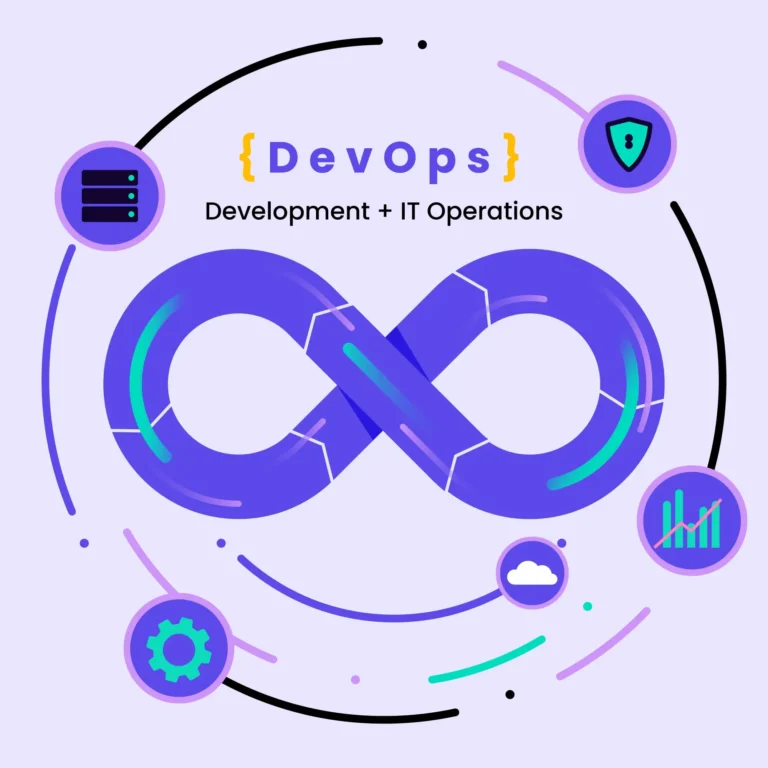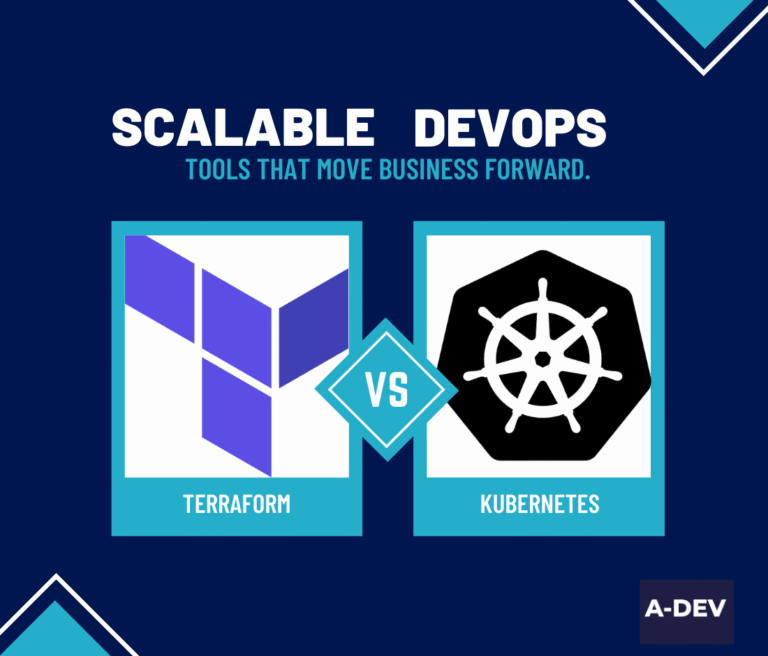1. The Power of DevSecOps in Modern Software Development

In today’s fast-paced digital world, software development faces a crucial challenge: balancing speed and security. This is where DevSecOps, the practice of integrating risk mitigation strategies seamlessly throughout the software development lifecycle (SDLC), emerges as a powerful solution.
1.1 What is DevSecOps and how does it impact the SDLC?
DevSecOps is a cultural and methodological shift that breaks down silos between development, operations, and security teams. It emphasizes collaboration and shared responsibility for security throughout the SDLC, from code inception to deployment and ongoing maintenance.
Here’s how DevSecOps impacts the SDLC:
- Early integration of security: Traditionally, security scans happened late in the developing process, leading to costly rework and delays. DevSecOps embeds security testing throughout the SDLC, catching security vulnerabilities early and minimizing rework.
- Automated security measures: Manual security testing is time-consuming and error-prone. DevSecOps automates security assessments and vulnerability scans, enabling faster feedback and continuous improvement.
- Continuous monitoring and threat detection: DevSecOps doesn’t stop at deployment. It includes continuous monitoring of production environments for threats and vulnerabilities, ensuring ongoing security posture.
To gain a deeper understanding of the underlying principles of DevOps, the foundation upon which DevSecOps builds, explore our blog post on DevOps fundamentals: Understanding DevOps Fundamentials and Essential Principles
1.2 Why are security practices and security teams crucial for successful DevSecOps adoption?

DevSecOps is not just about tools and automation; it’s about fostering a security-conscious culture. Security measures and dedicated security teams play a vital role:
- Security practices: Define the policies, procedures, and standards that govern secure coding, infrastructure configuration, and incident response.
- Security teams: Provide expertise, guidance, and support to development and operations teams, ensuring security best practices are implemented effectively.
Without strong cybersecurity practices and dedicated teams, DevSecOps can become just another set of tools, failing to deliver its full potential.
2. Navigating the Landscape: Key DevSecOps Trends for 2024
The DevSecOps landscape is constantly evolving, with new trends emerging to enhance security and agility in secure software development. Here, we explore some of the main trends shaping DevSecOps practices in 2024 and their impact on your development approach.

2.1 Top Trends Shaping DevSecOps Practices and Their Impact:
Early Security: Integrate security controls throughout the SDLC, from design to deployment (Shift-Left Security). This minimizes rework and promotes “security by design,” leading to faster development cycles with fewer vulnerabilities.
AI/ML in Security: Automate tasks like vulnerability scanning and anomaly detection with AI/ML, improving efficiency and accuracy. This reduces manual effort, enables faster threat detection, and enhances incident response. read more about integration of AI and ML in our recent post.
Cloud-Native Security: As cloud adoption grows, securing cloud environments is crucial. Leverage cloud-native security tools and best practices to achieve a robust security posture for your cloud-based applications and data.
Container Security: With widespread container technology, securing containerized workloads is critical. Implement container security tools and best practices to ensure secure container deployments and reduce risks associated with vulnerabilities.
Compliance Automation: Automate compliance checks and reporting to streamline processes and reduce the risk of non-compliance. This improves your compliance posture with reduced manual effort and faster reporting cycles.
These are just a few examples, and the specific trends most relevant to your organization will depend on your unique needs and goals.
2. Putting DevSecOps into Action: A Step-by-Step Guide
2.1 Seamlessly Integrate Cybersecurity into Your DevOps Workflow

1. Shift the Mindset: Collaboration is Key
Break down silos between teams! Foster a culture of shared responsibility where everyone owns security. Encourage open communication and collaboration between development, security and operations teams.
2. Automate Security Checks:
Don’t wait for later stages. Integrate automated security checks throughout your development pipeline. Tools like static code analysis, vulnerability scanners, and container image analysis can catch issues early, saving time and effort.
3. Monitor Proactively, Detect Actively:
Security doesn’t stop at deployment. Implement continuous monitoring tools to track your production environment for suspicious activity and potential threats. Early detection and response are crucial for minimizing damage.
4. Upskill Your Teams:
Empower your teams! Provide developers with security training and equip them with basic security strategies. Cyber defense teams can benefit from DevOps training to understand the development process and integrate seamlessly.
Remember, these are just initial steps. Adapt them to your specific needs and available tools. By prioritizing collaboration, automation, continuous monitoring, and integrating security throughout the entire software development cycle, you can build a secure and efficient DevOps process. This means considering security from the very beginning of the development process, during design, coding, testing, deployment, and ongoing maintenance. Integrating software security early and consistently helps catch vulnerabilities early, reducing rework, and ultimately enabling faster development cycles with fewer security risks
2.2 Common Challenges and Solutions in Implementing DevSecOps.

Challenge: Silos between development, operations, and security departments.
Solution: Foster a culture of collaboration through shared responsibility. Organize workshops, cross-training sessions, and regular communication channels to break down silos and promote shared ownership of security.
Challenge: Lack of automation in security processes.
Solution: Implement automated tools for scanning security vulnerabilities, code analysis, and compliance checks. Integrate these tools into your CI/CD pipeline for continuous feedback and faster remediation.
Challenge: Difficulty upskilling teams on DevSecOps methodology.
Solution: Provide security awareness training and specific technical skill development programs for both development and security departments. Utilize online resources, workshops, and mentorship opportunities to bridge the knowledge gap.
Challenge: Resistance to change in existing workflows.
Solution: Start small and demonstrate the value of DevSecOps through incremental improvements. Focus on the benefits of improved security, faster development cycles, and reduced risks to gain buy-in from stakeholders.
Challenge: Measuring the success of DevSecOps initiatives.
Solution: Define clear metrics aligned with your security goals, such as reduced vulnerabilities, faster incident response times, and improved compliance posture. Regularly track and report these metrics to demonstrate the positive impact of DevSecOps.
Remember: These are just some common challenges and solutions. The specific challenges you face will depend on your unique organizational context and software development lifecycle.
3. FAQ: Addressing Common Questions about DevSecOps

Q: How does DevSecOps fit within the broader cybersecurity landscape?
A: DevSecOps is a holistic approach within the cybersecurity landscape, integrating cybersecurity practices throughout the software development life cycle (SDLC). It goes beyond traditional security measures, fostering collaboration and shared responsibility between development, security and operations teams. This proactive approach strengthens overall security posture and reduces vulnerabilities of the software supply chain.
Q: How does DevSecOps address software supply chain security?
A: DevSecOps integrates security throughout the entire software development process, including:
- Early vulnerability scanning of code and dependencies.
- Software Bill of Materials (SBOM) for dependency tracking.
- Continuous monitoring for suspicious activity in third-party components.
- Perform automated security testing in the CI/CD pipeline.
- Collaboration between development, security, and procurement for risk management.
Q: DevSecOps vs. Agile: What’s the difference?
A: Both DevSecOps and Agile emphasize continuous improvement and collaboration, but with different focuses. Agile focuses on rapid delivery and iterative development, while DevSecOps prioritizes incorporating security at every stage. They complement each other, with DevSecOps enhancing security within Agile’s flexible development cycles.
Q: What does a concrete example of DevSecOps in action look like?
A: Imagine a company automatically scanning code for vulnerabilities early in development, fixing them promptly, and continuously monitoring production environments for threats. This proactive approach identifies and addresses security issues before they become major problems, illustrating DevSecOps in action. (Consider including a brief real-world example here, if feasible)
Q: What’s the official term for integrating security into DevOps?
A: While “DevSecOps” is the most common term, others include:
- Security by Design: Emphasizes security from the start.
- DevSecOps Integration: Focuses on merging cybersecurity practices with DevOps workflows.
- Secure DevOps: Highlights the security focus within DevOps.
Q: What does “DevOps in security” mean and how does it benefit development?
A: “DevOps in security” refers to applying DevOps principles to security processes, automating tasks, and improving collaboration. This benefits development by:
- Faster security checks: Shortens development cycles without compromising security.
- Improved communication: Fosters collaboration and shared understanding of security needs.
- Streamlined processes: Automates repetitive tasks, freeing up developers for core work.
Q: Where to integrate security practices in a DevOps platform?
A: Integrate security controls throughout the entire SDLC, not just at the end. Key points include:
- Code development: Static code analysis, secure coding practices.
- Testing and deployment: Automated security testing, vulnerability management.
- Production monitoring: Continuous threat detection, incident response.
4. Conclusion: Building a Secure and Agile Future with DevSecOps

Source: Freepik
In today’s fast-paced digital world, balancing speed and security in software development is no easy feat. DevSecOps emerges as a powerful solution, seamlessly integrating security practices throughout the SDLC. By embracing key trends like Shift-Left Security, AI/ML automation, and cloud-native security, organizations can achieve faster development cycles with fewer vulnerabilities.
Remember, DevSecOps is not just about tools and automation, it’s about fostering a culture of collaboration and shared responsibility. By breaking down silos between teams and empowering everyone with security awareness and upskilling, organizations can create a truly secure and efficient development environment.
Ready to unlock the full potential of DevSecOps? Contact A-Dev today! We offer comprehensive DevSecOps expertise and services to help you:
- Integrate security seamlessly into your DevOps workflow
- Empower your teams with the knowledge and skills they need
- Leverage cutting-edge tools and automation for enhanced security
- Build secure and agile software environments that deliver
Don’t wait, contact A-Dev and start your journey toward a secure and agile future with DevSecOps!






